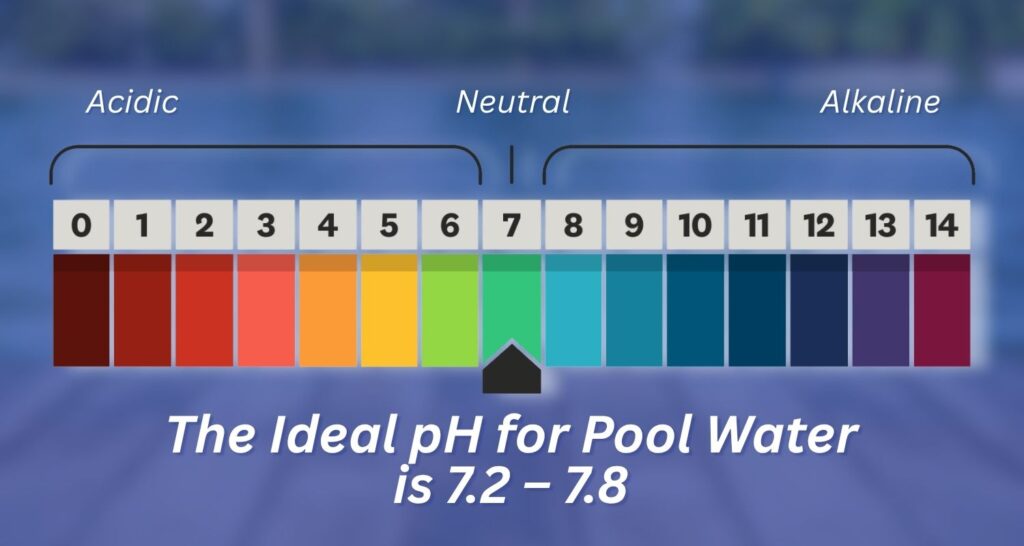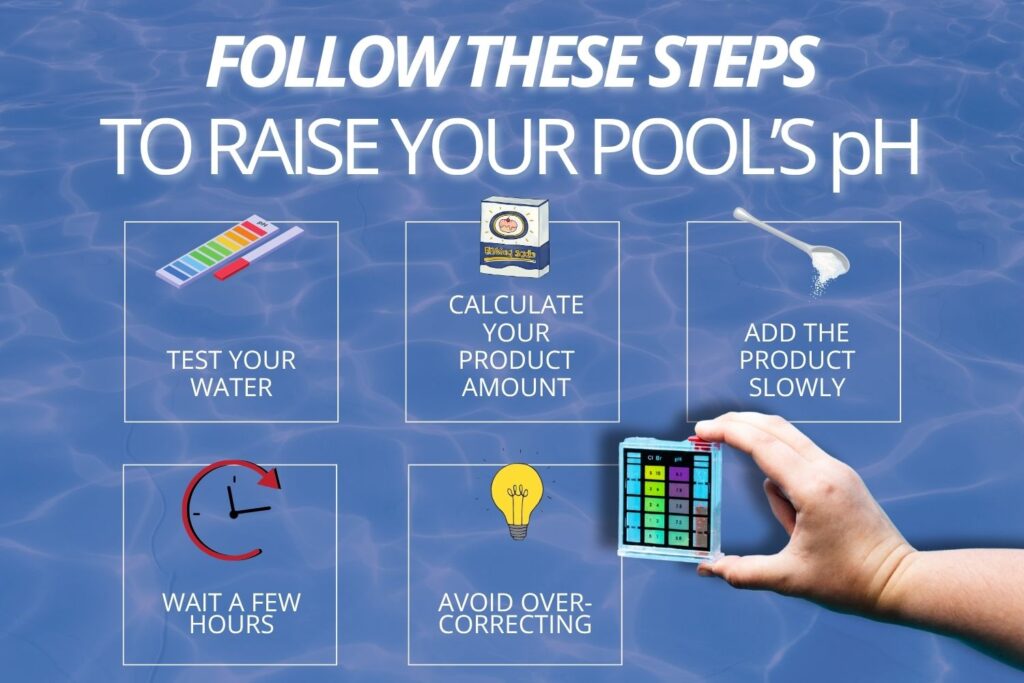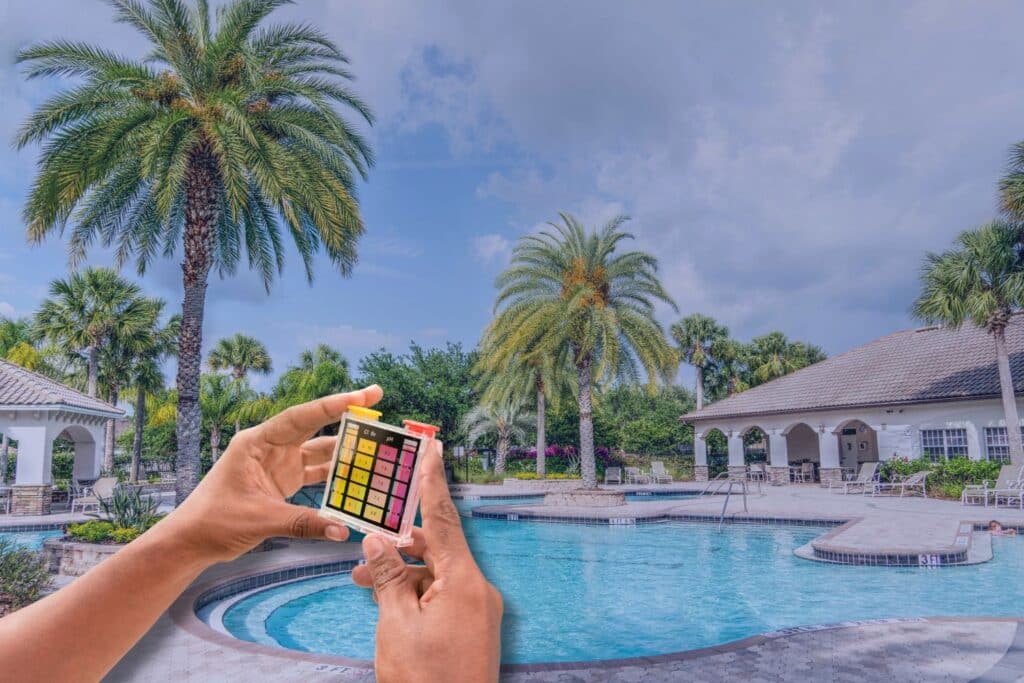Pools are a common feature in many homes, especially valued during the summer. During a home inspection, we do not just check for clear water. We look for signs of wear, damage, and poor maintenance. One of the most common issues? Low pool pH and no idea how to raise it.
Water that is too acidic can damage pool surfaces, corrode equipment, and raise questions about how well the pool has been maintained. If left unchecked, it may lead to costly repairs or concern during the inspection process.
Here is why pH matters, how to spot warning signs, and what to do if your levels are off.
What pH Means for Your Pool
pH measures how acidic or basic your pool water is. It’s ranked on a scale from 0 to 14, with 7 considered neutral. For most pools, the ideal pH range is between 7.2 and 7.8. Anything below that is considered low.
When pH drops too far, the water becomes acidic. That might not seem like a big deal at first, but over time, it can affect everything the water touches: including swimmers, surfaces, plumbing, and expensive equipment.

Why Low pH Is a Problem
Acidic pool water can cause more damage than most homeowners realize. Some of the most common issues include:
- Etching or corrosion on plaster, tile, or grout
- Metal staining from corroded ladders or fixtures
- Dry, irritated skin and eyes for swimmers
- Increased wear on pool pumps, heaters, and filters
- Reduced effectiveness of chlorine and other treatments
Low pH can even affect your home inspection if you’re buying or selling. Inspectors will often test the water’s clarity and chemical balance. If there are signs of surface wear, corroded fittings, or damage around the pool deck, pH could be a factor.
When to Raise the pH
You should test your pool water at least once a week, and more often during periods of heavy use or hot weather. If your pH consistently reads below 7.2, it’s time to take action.
Watch for these signs:
- Water looks clear but feels harsh on your skin
- You smell chlorine more than usual (low pH makes chlorine work harder)
- Surfaces feel rough or chalky
- Your pool liner or plaster shows new stains or discoloration
- Any metal fixtures start to show rust
If you’re planning to list your home, it’s especially important to correct water chemistry ahead of a buyer’s inspection. Water that looks good but tests poorly may raise red flags.
How to Safely Raise the pH in a Pool
There are two main products used to raise pool pH:
Sodium carbonate (also known as soda ash)
This is the most common pH increaser. It works quickly and is ideal for bringing pH levels back into range without affecting other aspects of your water balance too much.
Sodium bicarbonate (baking soda)
This is more often used to raise total alkalinity, but it can help with pH too, especially if both levels are low.
Here’s a Basic Step-by-Step
- Test your water using a test strip or drop kit. Make sure to check pH and alkalinity.
- Calculate how much product you need based on your pool size and test results. Product packaging usually includes a guide.
- Add the product slowly while your pool pump is running. This helps distribute it evenly.
- Wait a few hours and test again. You may need to make a second adjustment.
- Avoid overcorrecting. Too much pH increase can make the water cloudy or cause calcium buildup.
If you’re unsure, you can always take a water sample to your local pool supply store or contact a pool technician for help.

Other Water Balance Tips That Matter
pH is just one piece of the puzzle. To keep your pool healthy and inspection-ready, it’s important to keep other levels in check too:
- Chlorine keeps the water sanitized and safe
- Alkalinity helps stabilize pH
- Calcium hardness affects plaster and liner health
- Stabilizer (cyanuric acid) protects chlorine from sunlight
Staying on top of these levels helps your pH stay in range more consistently. It also makes your pool safer and more enjoyable for everyday use.
Some Related Questions
Can low pH really damage pool equipment?
Yes. Acidic water can corrode metal parts, shorten the life of filters, and even lead to staining or pitting in the plaster.
Is baking soda a safe option?
Baking soda is safe but works more slowly than soda ash. It’s a good choice if both alkalinity and pH are low.
Do home inspectors test pool water?
Not always, but many will assess overall condition, look for damage or wear, and note issues like cloudy water or signs of corrosion. If the pH is too low, there may be visible symptoms that show up in the report.
Should I test well water before a home inspection?
Yes, especially if the property uses a private well. Testing your well and water before the inspection can help you catch issues early, show responsible maintenance, and avoid surprises on the report. Some contaminants, like bacteria or nitrates, may require treatment or follow-up testing, and it’s better to know ahead of time.
When to Call a Professional
If your pool chemistry keeps shifting or you’re unsure how to raise pH without affecting other levels, it’s smart to call in a pool service expert. This is especially helpful before listing your home, after storms, or during peak swim season.
And if you’re buying a home with a pool, always request a pool inspection along with the home inspection. At America’s Choice, we often identify surface damage, worn-out seals, or staining that points to long-term water imbalance.
Conclusion
Raising your pool’s pH is simple once you know what to look for. And when water is balanced, your pool lasts longer, looks better, and costs less to maintain.
Whether you’re trying to prevent damage, keep your family safe, or prepare for an inspection, staying on top of maintenance like this is an easy win. Don’t forget to bring in a professional inspector when needed: America’s Choice is here when you’re ready.


